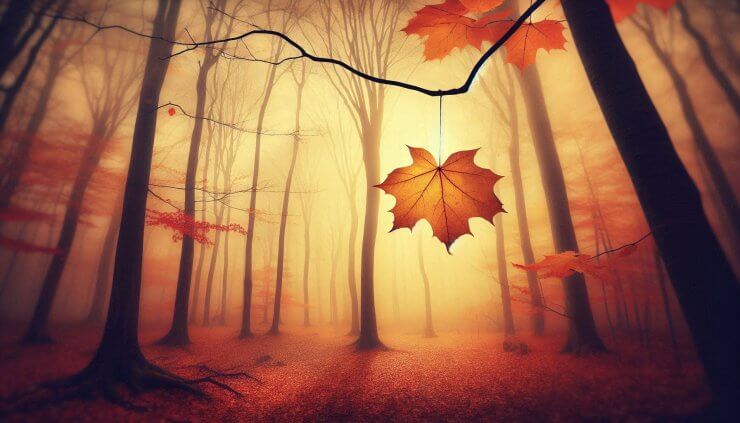Read by Matilda Longbottom

Fall in Vermont (at least briefly) is glorious. The air is crisp; the leaves are bright; and the grass has stopped growing, so there’s no need to mow the lawn. Everybody loves October. At a guess, about 2.5 million people visit Vermont in October, thus providing what for us counts as a tax base.
Then the leaves fall off the trees; the sky turns gray; the tourists go home; and it’s November.
We have two family birthdays in November, which ordinarily should cheer up the month, but one of them is mine, which somehow lacks the charm and excitement that it had a couple of decades ago. November features Guy Fawkes Day which commemorates the (foiled) attempt of the Catholic Guy Fawkes to blow up Parliament and King James I with 36 barrels of gunpowder. Apprehended, Fawkes pretty much did in his defense by announcing that his intention was to blow all Scots back across the border. He was subsequently hanged, drawn and quartered, and the Brits have been burning him in effigy every November ever since.
Anne Shirley, the title character of L.M. Montgomery’s Anne of Green Gables, enthuses that she’s so glad to live in a world where there are Octobers – but doesn’t, you notice, mention Novembers. Charles Dickens, in Bleak House, does, citing cold, drizzle, misery, and fog. Quotations about November – I just looked them up—routinely include phrases like “dull and dark” and “chill and drear.” Lists of things that you’re supposed to be grateful for at Thanksgiving do not mention November.
Things either die in November or go south. By November, the garden is toast, except for stuff that nobody much likes to eat, like parsnips and Brussels sprouts, and by November, all the smarter birds are in Mexico.
And let’s consider all those leaves. Word of warning: if you’re going to anthropomorphize something – give it a pet name, for example—don’t let it be a leaf. Leaves have expiration dates. Trees – after happily exploiting leaves as food factories throughout the Summer – jettison them without a second thought at the approach of Winter. It’s a survival mechanism for trees, allowing them to conserve water and energy during the cold months. Frankly, there’s no way the leaves are going to make it anyway: thin and unprotected, their cells would rupture at the first frost due to expanding ice crystals. Furthermore, should they stay on the tree, the substantial weight of snow and ice collecting on their flat, floppy surfaces could lead to structural damage: snapped twigs and breaking branches. Leaves are made to be disposable; better by far to chuck the things and start again in Spring.
Still, the whole business seems mean and ungrateful after all those months of photosynthesis. Trees, if they were people, would be the calculating and cold-blooded sorts who shove other people out of crowded lifeboats. If you were shipwrecked with them, they’d eat you.
Which brings us to Freddy the Leaf.
Freddy is the star of The Fall of Freddy the Leaf, a picture book by Leo Buscaglia, originally published in 1982 and still in print. It was written to introduce children to the concept of death—though chances are it’s equally likely to totally freak them out about falling leaves. In the book, the days are getting shorter, the nights longer, and the air colder – and Freddy the Leaf, hanging from his branch, watches worriedly as all the leaves around him begin to fall.
Realize that no matter what the book implies, Freddy doesn’t have much choice in the matter. Waning light and dropping temperature activate plant hormones (auxin, ethylene, and abscisic acid) that set of the abscission process, sealing off the vessels that bring nutrients and water to the leaves and creating a weak-walled separation zone at the base of the petiole – that is, the skinny stem that connects a leaf to its branch. Once abscission is underway, the handwriting for leaves is on the wall. The tree is done with them and is cutting them loose.
In the book, Freddy’s best friend Daniel (a larger, wiser leaf) explains that falling is natural; their time has come to die. Freddy doesn’t like this one bit: he’s scared of dying and is resolved to keep hanging on. Finally even Daniel has fallen from the tree, and Freddy is the last leaf left on his branch. By now it’s well into November, if not December – a first snow falls and Freddy at long last lets go. It’s not so bad. He drifts down into a soft snowbank and falls asleep. And that’s the end of Freddy.
I mean, please. Even the end of The Chronicles of Narnia, where everyone gets to stay in Narnia because in the real world they’ve died in a train crash isn’t as dismal as Freddy.
Freddy, perversely, always cheers me up.
Snow and sleet, icy roads, outrageous fuel bills, putting the chains on the tractor, frostbite, supermarket tomatoes that taste like cotton balls: all are minor seasonal inconveniences once you realize–at least you’re not Freddy.
Freddy even carried me through the disastrous year when raccoons broke into the cooler on the back porch and ate our Thanksgiving turkey. It could be worse, I thought, viewing the chewed remains and thinking about doubling the mashed potatoes. I could be Freddy.
All right, given the human condition, we’re all going to die. If we’re lucky – barring explosions and plague – we’ll get to drift down into a soft snowbank and fall asleep.
But if there’s ever a lesson from November, it’s to look forward and keep hanging on.
We don’t have to be Freddy.
After all, November is a short month.
Christmas is just around the corner and it’s really not all that long until Spring. ❖


 Previous
Previous


